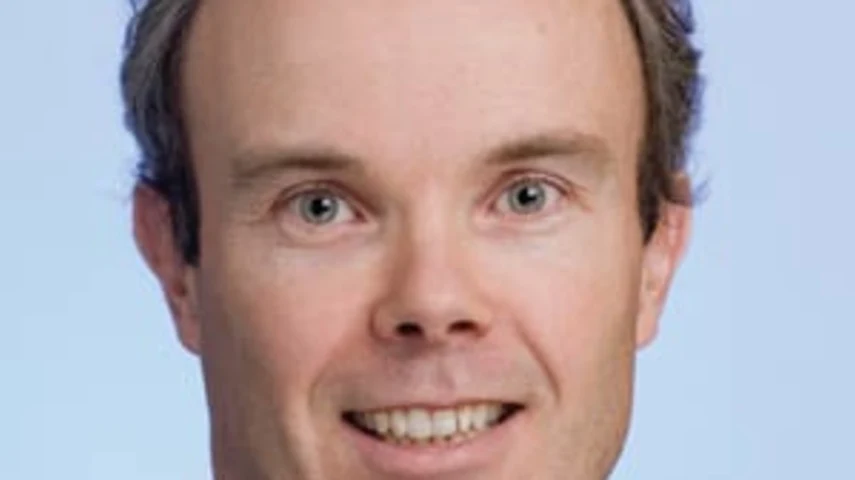Magellan navigates own path



Magellan chief executive Hamish Douglass, is very relaxed about the news that passive fund managers are cutting into the business of active fund managers.
In fact he regards the rise of passive investing as providing a service to the actively managed investment sector by highlighting where the latter does, and does not, add value.
For Douglass this has been one of the key trends in asset management in recent years but has been obscured as the trend has been simplified into 'active versus passive'.
"A number of people have said passive investing is the death of the active industry but in reality it is the death of the low value-add active manager while truly active managers should have nothing to fear. Active management is not dead but inactive active management is." - Hamish Douglass
"The emergence of the passive industry has put a spotlight on what part of active management provides value and what part does not provide value," he said.
"A number of active managers have for decades run large portfolios with hundreds of stocks and looked like the market, yet charged high fees, and the passive industry has shown that business model up for what it is."
According to Douglass the active management sector should be exhibiting high active share, high tracking error and concentrated strategies to create a higher probability of differentiating themselves from indices and index hugging 'active' managers.
He said the passive market will always be able to out-price the latter style of managers and Magellan was not troubled by the shift to passive management.
"We are not concerned about it at all. We love the passive industry and if people want market beta we fully subscribe that they should buy it for low cost and only pay for active management if it really provides value. As such we are not afraid to be tested on that basis," Douglass said.
"A number of people have said passive investing is the death of the active industry but in reality it is the death of the low value-add active manager while truly active managers should have nothing to fear. Active management is not dead but inactive active management is."
That is not to state that Magellan has been quietly sitting back watching the asset management space change around it.
Earlier this year it launched an Australian Securities Exchange-quoted version of its actively managed flagship Global Equities Fund (MGF) which many labeled as an active exchange traded fund (ETF).
Douglass said Magellan refers to it as an exchange quoted fund and that it was not the first of new- trend to mid-point products between active and passively managed products.
He said while there had been a large trend to ETF products the actively quoted MGF was not trying to compete with them because it was a different offering.
"I don't view it as a battle between us and passive ETFs. Advisers make their own choices about active and passive, and many choose a combination of passive and satellite funds.
"ETFs track a passive index while our product is actively managed and concentrated and adds value in different ways."
He also said the actively quoted MGF would differ from ETFs in that investors would be able to buy and sell units on the ASX and settle via CHESS with the fund offering more efficient pricing and higher liquidity than listed investment companies (LIC).
According to Douglass, Magellan had begun working on the product more than a year ago and was required to present its operating model to regulators to ensure it could offer a managed investment scheme structure that was also listed but did not have to provide daily disclosure of its portfolio holdings.
Despite this difference, Douglass said the actively quoted MGF has been well received and has reached $170 million in funds under management two months after launching, having been seeded with $50 million, and currently has 3000 shareholders.
He said while the response had been very strong, it was still a new product and the broking and planning communities still needed to get their minds around it.
"We are still providing education around the strategy and use of the fund. We have found that advisers and brokers usually do not use unlisted funds but they can now live trade as easy as if the units were shares."
Douglass admits the actively quoted MGF was not designed firstly for financial planners but Magellan is well aware that some advisers now prefer to simplify their business models and deal with listed shares because of the ease in moving clients in and out of investments.
"There is a segment of advisers who see it as a terrific idea because they and their clients have never been able to buy an active fund in listed form. For our part we just want to have solutions that remove friction and provide form factors that suit the business models of advisers and brokers and their clients."
Magellan Financial Group
Year manager was founded: 2006
Key Personnel
- Chief Executive Officer: Hamish Douglass (Co-Founder, CEO and CIO)
- Chief Investment Officer: Domenico Giuliano (Deputy CIO and Portfolio Manager)
Asset Classes covered: Global Equities and Global Listed Infrastructure
Leading Fund: Magellan Global Fund
- Minimum investment amount: $20,000
- Fees/MER: 1.35% Management and Administration fee
- Last 12 months performance of fund: 28.1% (compared with index: 26.2%)
- Research house ratings for fund: Lonsec: 5 Highly Recommended, Morningstar: GOLD, Zenith: Highly Recommended
- Major platforms providers through which fund is available: Asgard, AMP, ANZ, BT, Colonial, IOOF, Macquarie, MLC, North, Oasis, Questor, Netwealth
Total FUM in all funds offered: $35.6 billion
Recommended for you
Bell Financial Group has appointed a chief investment officer who joins the firm from Clime Investment Management.
Private markets funds with “unattractive practices” could find themselves facing enforcement activity with ASIC chair Joe Longo stating he cannot rule it out in the future.
Despite ASIC concerns about private credit funds being accessed via the advised channel, there are questions regarding how high its usage actually is among financial advisers.
Challenger has looked to the superannuation industry for its appointment of a group chief investment officer, a newly-created role.









